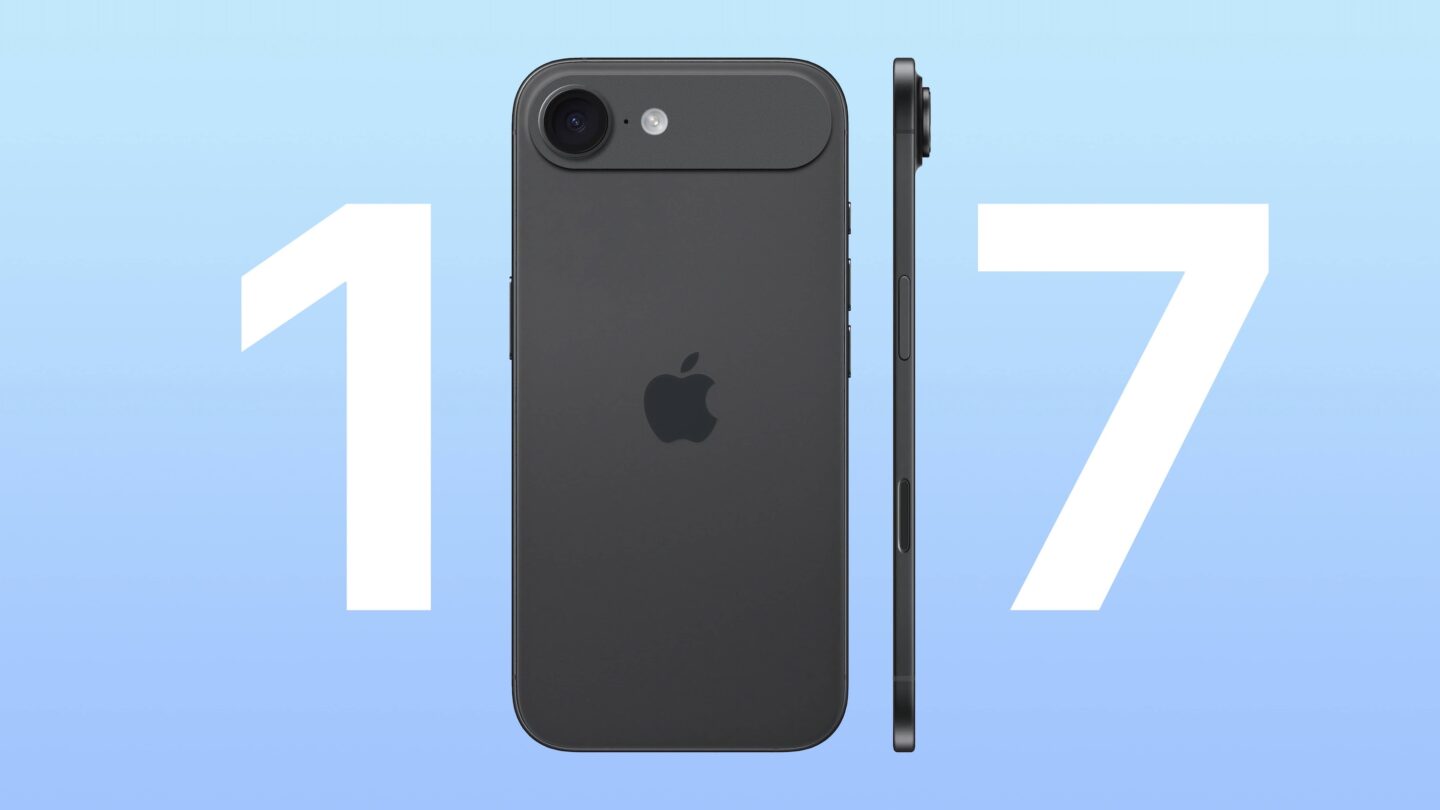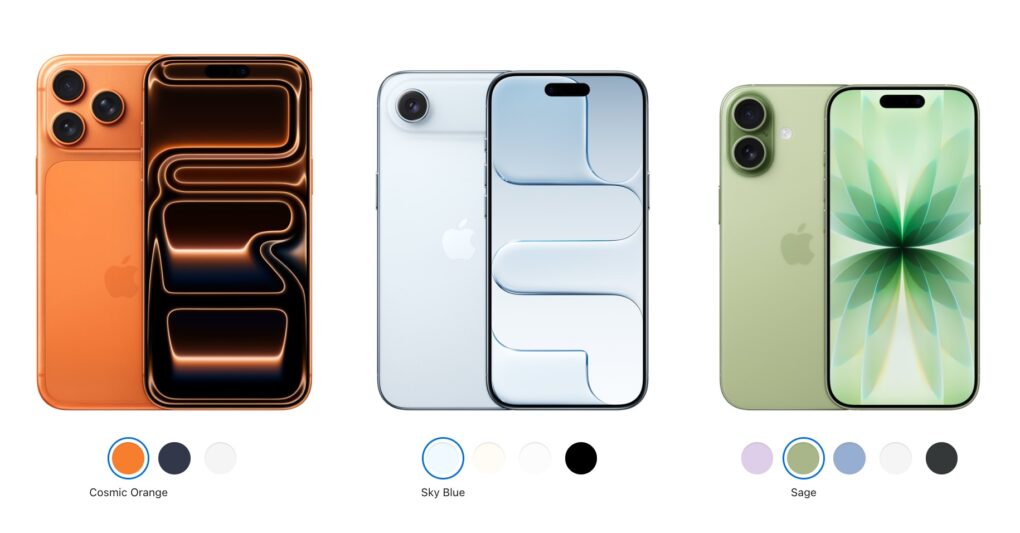Early reviews of the iPhone 17 lineup say the 2025 models bring Apple’s most significant generational upgrade in years, despite some caveats here and there.
The series spans four models, each targeting different user priorities, from the newly capable base model to the ultra-thin iPhone Air and the two powerhouse Pro variants.
iPhone 17 lineup reviews: Base model finally gets premium treatment

Image: Apple
After years of compromises, the standard iPhone model — iPhone 17 — now earns widespread praise for bringing Pro-level features to Apple’s entry-tier device.
Wonderful display
The most transformative change is the display upgrade to 6.3 inches (up from 6.1 inches) with 120Hz ProMotion refresh rates and always-on functionality, according to reviewers.
The Verge called the new display “a game changer,” noting that it matches the Pro models “in size, resolution and specs.” The review highlighted how the always-on display makes the device “a whole lot more useful” by allowing users to quickly glance at notifications, widgets and the clock without fully activating the screen.
TechRadar dubbed the display “the star of the show,” praising how ProMotion delivers “a buttery-smooth experience for scrolling, swiping, gaming, streaming and even general navigation” as it dynamically adjusts from 1Hz to 120Hz. The screen also features Ceramic Shield 2, which the review noted makes it “three times as scratch-resistant” compared to iPhone 16.
Camera upgrades
Camera improvements represent another major leap forward. iPhone 17 upgrades to a 48-megapixel Ultra Wide camera from the previous 12-megapixel version, joining the existing 48-megapixel Wide camera.
CNET welcomed these enhancements, noting that the base model offers “more photo-taking flexibility” than the higher-priced iPhone Air, including 0.5x ultra-wide shots and Cinematic mode video recording.
Surprising performance
Performance testing revealed surprising results. PC Magazine‘s Eric Zeman found the iPhone 17’s A19 processor “runs a bit faster than the iPhone Air” while running cooler under load.
The chip also outperformed Google’s Pixel 10 Tensor G5 processor and Samsung’s Galaxy S25 Snapdragon 8 Elite in CPU benchmarks, though it trailed slightly in GPU calculations.
Battery life improvements
Battery life improvements, while modest, proved meaningful in real-world use. Tom’s Guide recorded 12 hours and 47 minutes in testing, a 34-minute improvement over the iPhone 16 despite the larger display. Apple also upgraded charging capabilities, with 35W wired charging reaching 39% in 15 minutes and 71% in 30 minutes, plus 25W Qi 2.2 wireless charging support.
The iPhone 17 starts at $799, making these premium features accessible at the entry level for the first time.
iPhone 17 video reviews
iPhone 17 Air: Ultra-thin design meets acceptable compromises

Photo: Case Luxury
iPhone Air’s headline feature is its remarkably thin 5.6mm profile. But reviewers focused heavily on whether the design’s compromises were worth the premium look. The consensus suggests the trade-offs are more manageable than expected, though not without limitations.
Battery life: Mixed opinions
Battery life emerged as the primary concern, with mixed but generally acceptable results. The Verge called it “just okay,” noting that light users on Wi-Fi “might never have a problem,” but heavy usage could leave the battery “in the 20s before dinnertime.” Testing showed three hours of screen time consuming about 60% of the battery.
Wired was more positive, finding the Air “generally able to last a full day with average use” and hitting “around five hours of screen-on time with around 18 percent left by 10:30 pm.” However, the publication cautioned that “heavy users will undoubtedly need to top up this phone during the day,” citing a travel day that started at 5:30 a.m., with extensive use draining the battery to just 2% by 4:30 p.m.
Robust performance
Performance proved surprisingly robust despite the thin form factor. Tom’s Guide tested sustained performance using 3DMark’s stress test and found the iPhone Air “performed quite well, with stability scores that beat the Galaxy S25 Edge by a fair margin.”
More surprisingly, thermal management exceeded expectations, with the Air running cooler than the iPhone 17 Pro Max under load.
Camera compromises
The camera system represents the Air’s most significant compromise. With only a single 48-megapixel rear camera, CNET found it “surprisingly limiting to not have an ultrawide camera, especially when I wanted to capture more sweeping landscapes.” The review noted Samsung’s Galaxy S25 Edge includes both wide and ultra-wide cameras, making it “feel like less of a compromise.”
Despite limitations, the review praised the Air’s photo quality, noting that the rear camera “consistently delivered” with “well balanced” shadows and highlights, “true to life” colors and “overall sharpness and clarity.”
The iPhone Air includes Pro features like ProMotion display technology and the A19 Pro chip (with a slightly reduced 5-core GPU), justifying its premium positioning despite the compromises.
iPhone Air video reviews
iPhone 17 Pro and Pro Max: Refinement and meaningful upgrades

Photo: Apple
Pro models received praise for addressing previous generations’ pain points while introducing meaningful new capabilities. The design overhaul features an aluminum unibody frame and full-width rear camera plateau, available in Silver, Deep Blue and Cosmic Orange.
Battery life improvements are key
Battery life improvements stood out as a key advantage over the iPhone Air. Tom’s Guide testing showed the iPhone 17 Pro lasting 15 hours and 32 minutes, a significant improvement over the iPhone 16 Pro’s 14 hours and 7 minutes. Real-world usage confirmed all-day performance even with intensive tasks like photography, video streaming and gaming.
Camera upgrades
The new 48-megapixel telephoto camera enables 4x and 8x optical zoom for the first time. CNET‘s testing found that “4x images taken under good lighting can stand toe-to-toe with images from the main camera,” though 8x images showed “more noise and softness” in challenging conditions. The upgrade from the previous 5x to 4x digital zoom initially seemed like a step backward, but reviewers found the difference negligible in practice.
The new 18-megapixel front-facing camera with automatic rotation and Center Stage functionality rounds out the Pro models’ feature set, though reviewers spent less time evaluating these additions.
Nice thermal management and chip upgrades
Thermal management received significant improvements thanks to the new vapor chamber cooling system. Wired’s testing with demanding games like Assassin’s Creed Mirage showed “significantly smoother” performance compared to the iPhone 16 Pro, with heat “spread out over the entire back of the phone” rather than concentrated in hot spots.
The A19 Pro chip’s Neural Accelerators delivered noticeable improvements in AI tasks. Engadget noted “marked improvement in speed” for Image Playground and Genmoji generation, with the neural accelerators “certainly pulling their weight” in accelerating Apple Intelligence features.
The iPhone 17 Pro models represent Apple’s most refined flagship offering, addressing thermal issues while delivering meaningful camera and performance improvements that justify their premium positioning.
iPhone 17 Pro/Pro Max Video reviews


